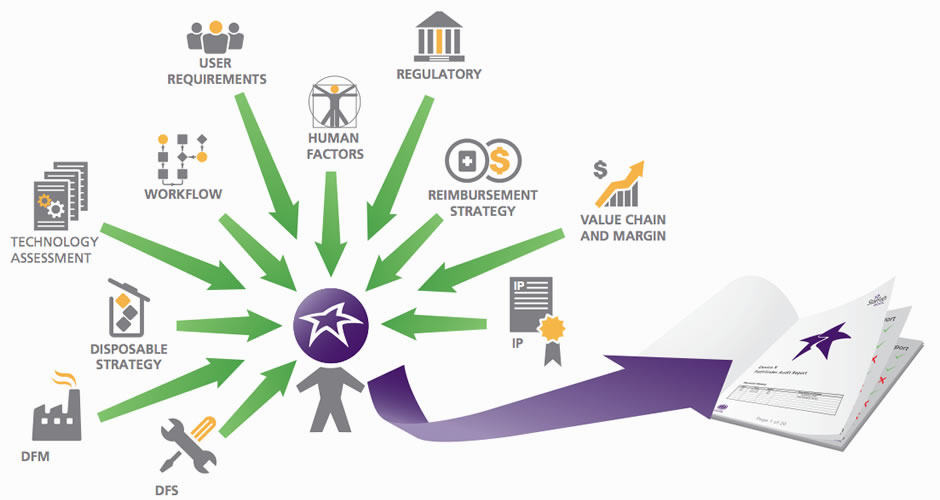Over the years, StarFish Medical has worked with a lot of entrepreneurial individuals and their ideas for exciting new medical devices. Our experiences led to the Pathfinder process, which assists the entrepreneur in gauging their new technology commercialization readiness.
Part 1 of this blog touches on four areas typically investigated as part of a thorough review – Intellectual Property, Consumables Strategy, Value Chain and Margin, and Reimbursement– all key to Medical Device Success.
The first thing is make sure a Confidentiality agreement is in place. General Disclosure of any invention is generally delayed until after the invention has been filed with the relevant patent authorities. Then review the available materials: Sometimes a fully drafted patent needs a second opinion, sometimes an invention description needs modification to become an effective patent, and sometimes only an ‘idea’ exists.
Whatever the stage, an opinion on patentability (which is whether the idea or invention is novel, has industrial applicability and contains a non-obvious inventive step) is wise. Alternatively, some clients are faced with existing IP which they know they must design around, and need help coming up with technical solutions that don’t infringe on existing IP.

Consumables Strategy
Most investors require recurring revenue through the use of consumables or disposables. This used to be known as the razor blade model, but may now be more commonly known as the print cartridge model. Here, the main ‘device’ is sold for a low, zero or even negative profit, but in order to use the device, consumables are required. This model benefits healthcare facilities as they do not need invest large amounts on capital costs, and can spend on a ‘per use’ model.
Review the business plan and then review the consumable for workarounds, freedom to operate, and manufacturability. Also get end user feedback. If a user perceives a consumable as overly expensive, this may be counted as a negative against your device. Striking the right balance of functionality, design and technology for the task at hand is the key to user acceptance.
Value Chain and Margin
It used to be that a $1Million idea was a dream. However, the costs of IP maintenance, product realization, transfer to manufacture and actual manufacturing, plus operational costs such as quality systems, seriously erodes profitability.
For example, it is unrealistic to expect that the entrepreneur, as inventor and designer, will then get in their car and visit hospitals and Doctor’s Offices to sell the finished device. Unfortunately, most large medical device distributors will require 50% (or more) of any margin, as they must support their various local sales offices. Hence, you should perform a sanity check to ensure the business plan is viable and that the right amount of funds are being raised, with the right commercialization pathway. Learn more in Margin Matters.
Reimbursement
Like regulatory compliance, reimbursement is an expertise in itself, and can be impervious for those without experience. However, to gain investment, it is not usually enough to demonstrate you can distribute your device and make a profit – one must also demonstrate that people will buy your device. But why would they?
The main thing to note is that procedures are reimbursed, not devices. Here, review the Medicare and Medicaid databases to determine which Healthcare Common Procedure Coding systems could apply.
However, a word of warning that just because a code is applicable, it does not mean it is covered under insurance schemes, as some procedures are considered experimental. Even then, the guidance for the deployment of a procedure can be restrictive, and there are many examples of claims being denied each year for correctly performed procedures that were deemed unnecessary; a common denial being the procedure is considered part of the general inpatient or doctor’s office health check. Have an expert review the Medicare data and provide supporting materials to your business plan.
Identifying areas of potential weakness like Intellectual Property, Consumables Strategy, Value Chain and Margin, and Reimbursement is a sanity check that will pay off while raising funds, clearing regulatory approval, and seeking market success.
In part 2 I tackle Regulatory, Human Factors and Workflow, Technology Assessment and Design for Manufacture.
In the meantime, take us up on a free one hour consultation.
Vincent Crabtree, PhD is a former Regulatory Advisor & Project Manager at StarFish Medical.
Images: StarFish Medical